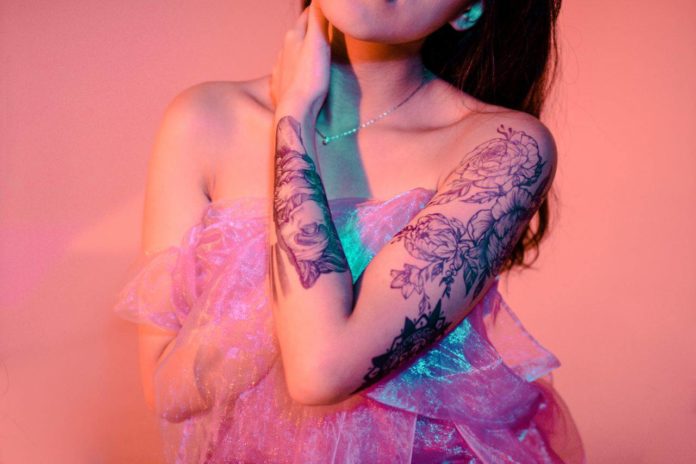SINGAPORE: Dragons, lush flowers and the stoic faces of Greek gods.
These are some of the bold motifs that have adorned the skin of Ng See Min’s clients in sprawling, elaborate designs that often cover their entire arms or backs.
The catch: They only last about two weeks.
The 23-year-old artist lays claim to being Singapore’s first-ever jagua tattoo artist. Her tools of choice are not tattoo machines and needles, but cones and bottles of a gel made from the juice of the Genipa Americana fruit – commonly known as jagua – mixed with water and essential oils.
The gel is washed off after a few hours, leaving a faint tint that gradually darkens into a deep blue-black over the next one to two days. The resulting stain, which lasts about two weeks, is practically indistinguishable from a permanent tattoo.

Photo courtesy of Ng See Min.
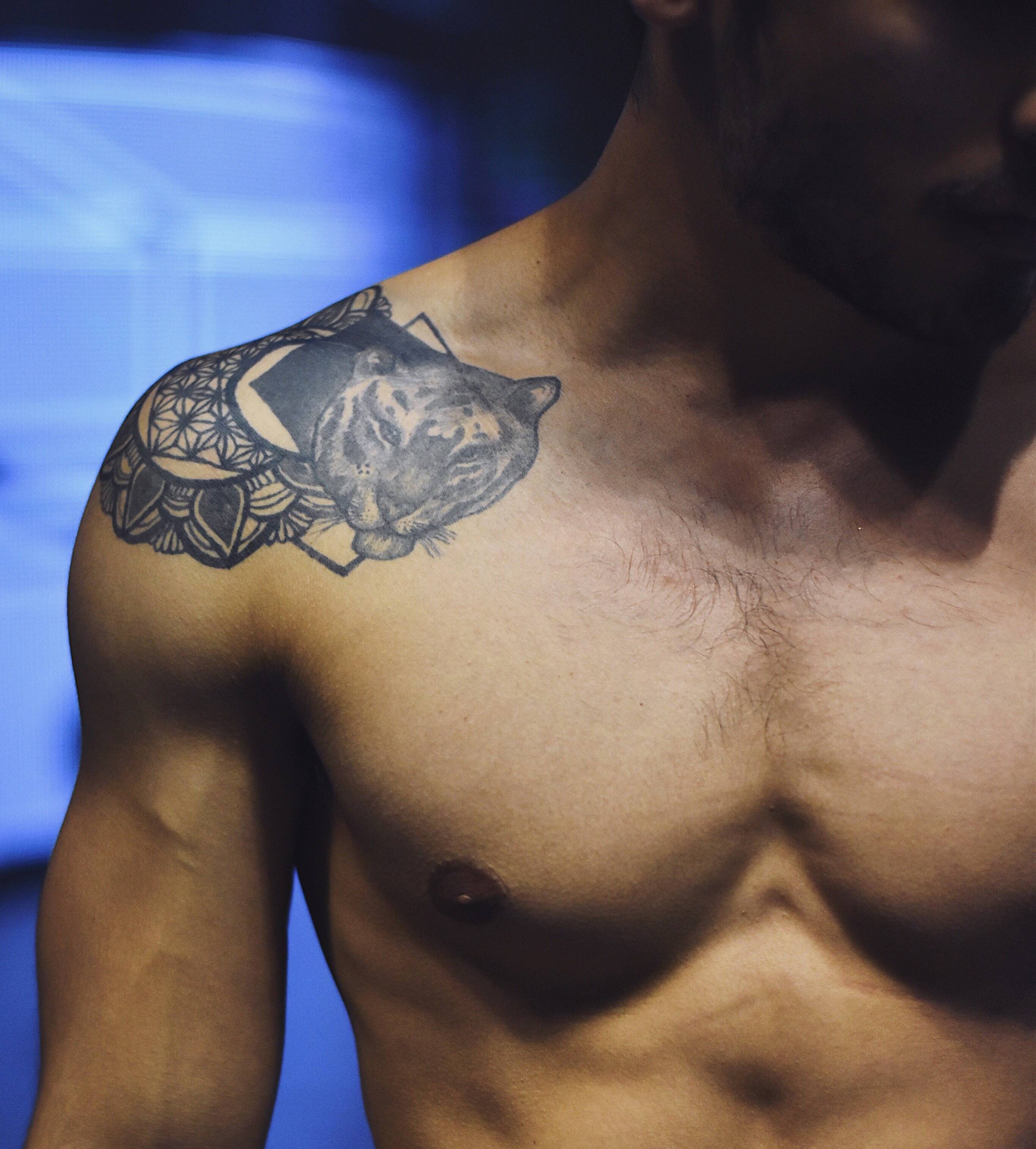
Photo courtesy of Ng See Min.
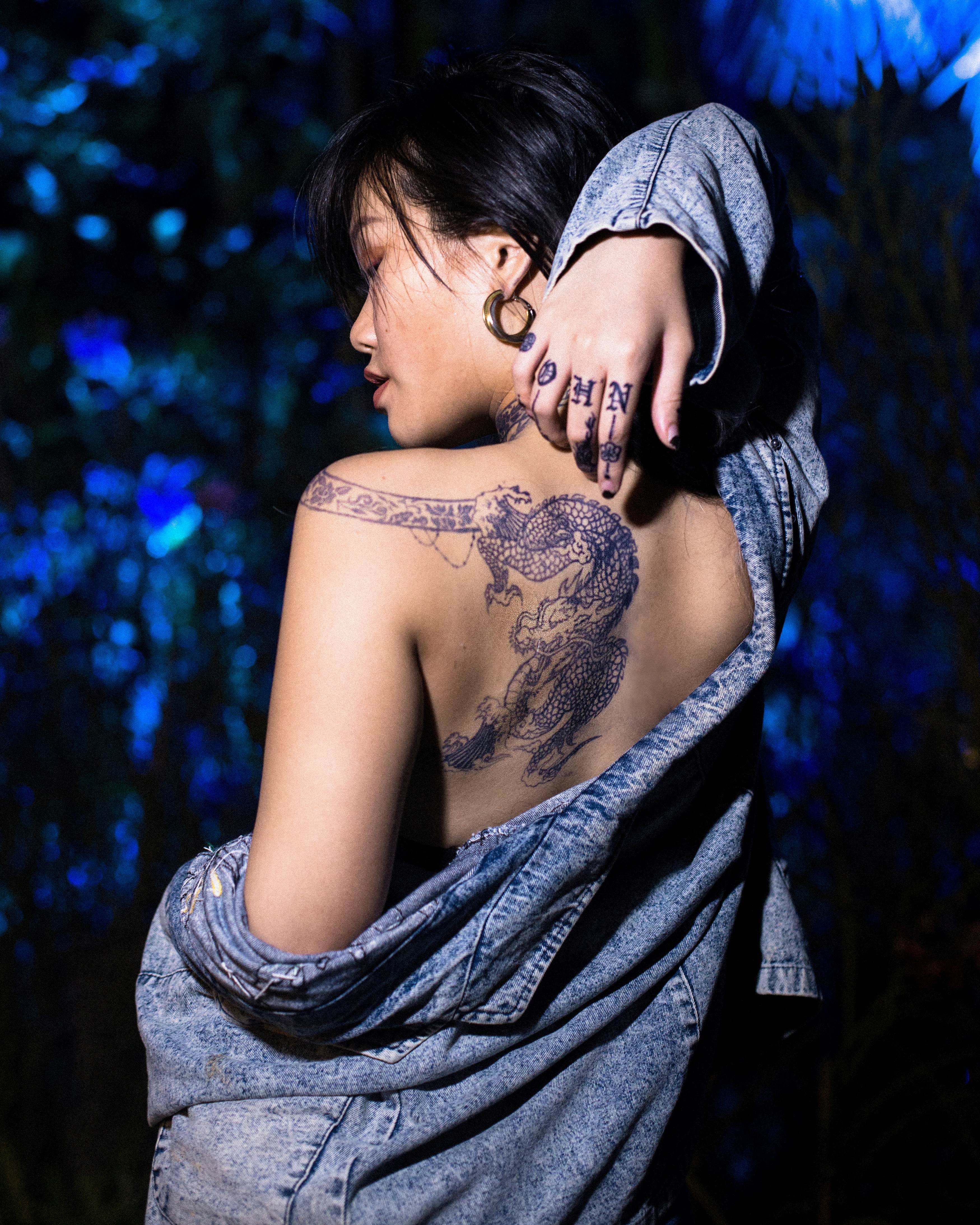
Photo courtesy of Ng See Min.
The juice of the jagua fruit has been used by South American tribes for ornamentation and medicinal purposes for centuries. But while it has more recently caught on among henna body artists in North America and Europe, it is still a relative novelty in Singapore.
Ng jokingly credits her mother for her fascination with body art.
“She didn’t allow me to have tattoos since young. So, you know, the more you restrict something, the more you’ll like it,” she said, bursting into laughter.
The 23-year-old artist speaks to Channel NewsAsia. (Photo: Gaya Chandramohan)
She began by drawing tattoo designs on her own skin with pens, but after being warned by those around her that the ink could be bad for her, she began using henna, another plant-based paste that temporarily stains the skin an earthy hue.
“But henna was still brown, it didn’t really look very realistic to me and I really didn’t feel the kick of it,” she said.
She discovered jagua while searching for inspiration from overseas henna artists, given that, she said, there weren’t many henna artists in Singapore that ventured out into more “tattoo-like” modern designs.
“Maybe because (these overseas artists) were near South America, they heard about this jagua ink and they tried it … So that was how I realised that there was this new blue stain that looks really, really good, and looks like a real tattoo.
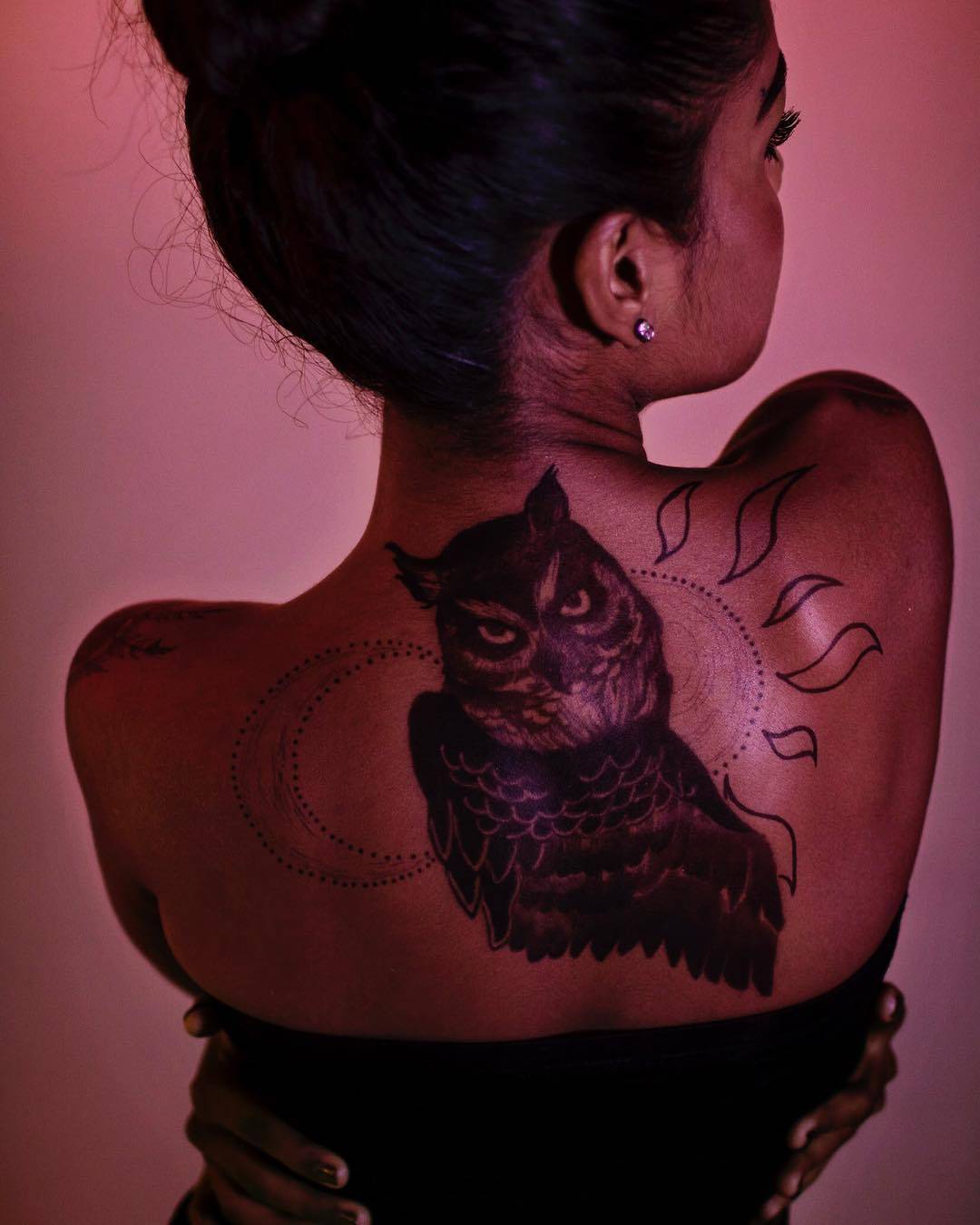
Photo courtesy of Ng See Min.
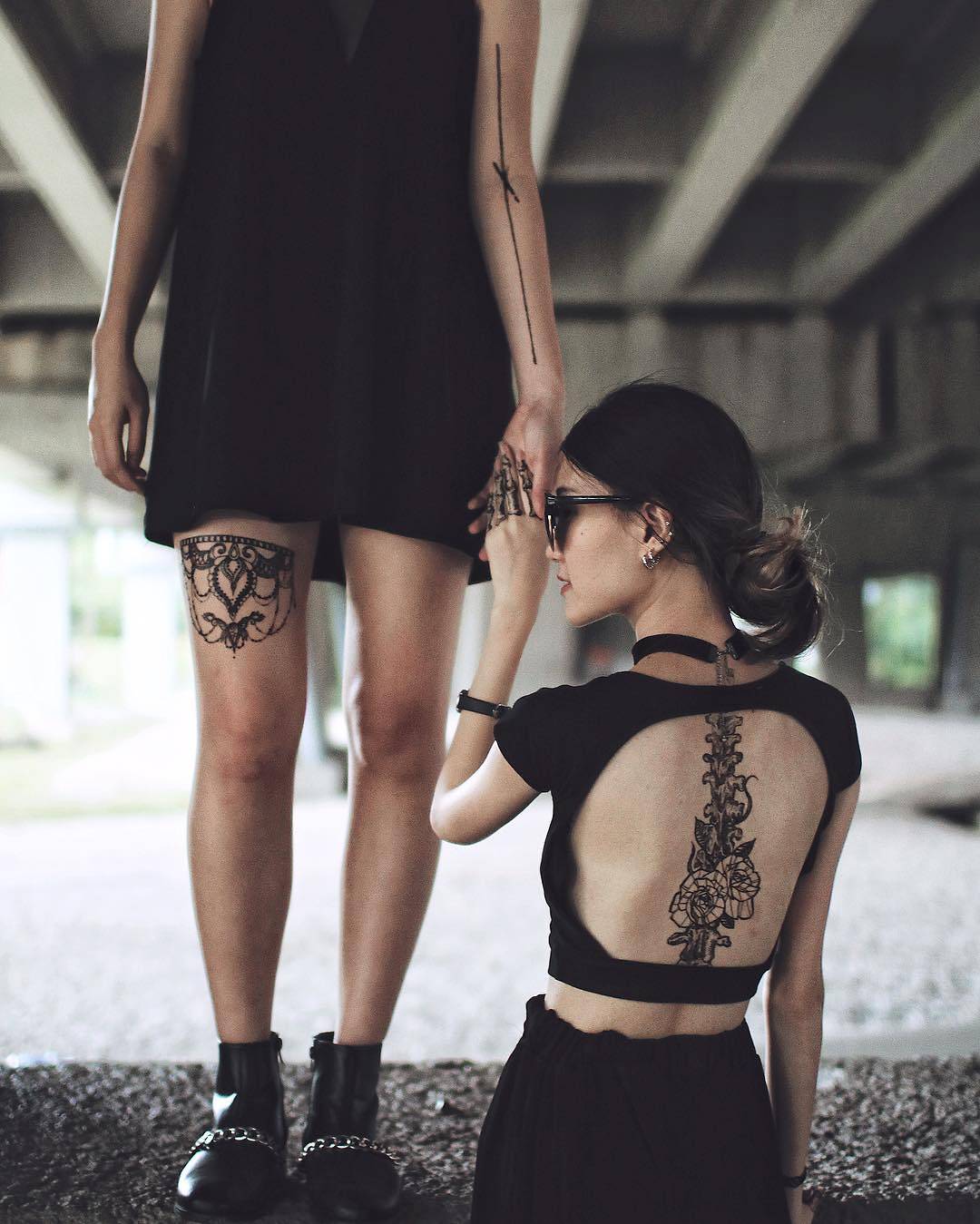
Photo courtesy of Ng See Min.
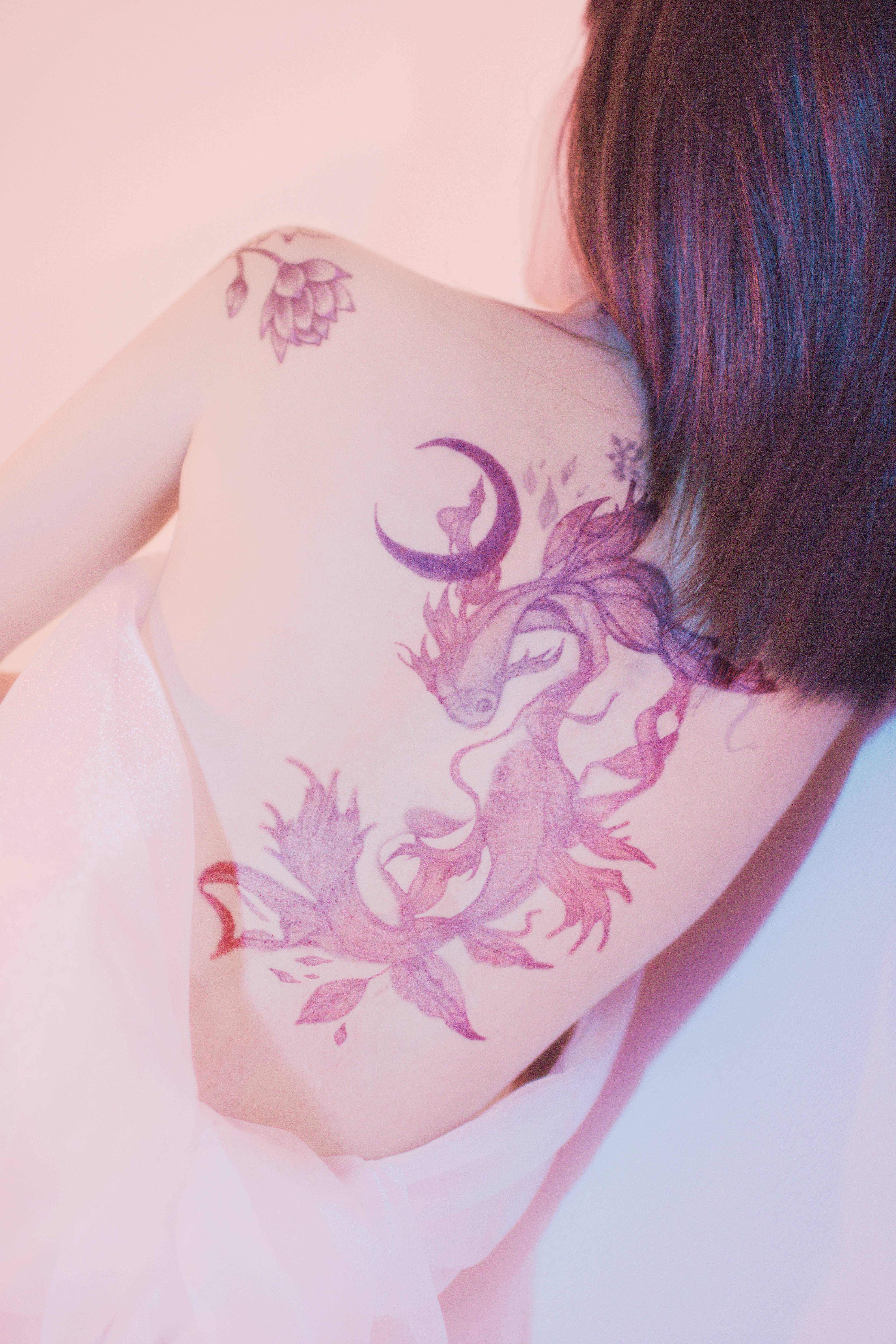
Photo courtesy of Ng See Min.
“I was also taken aback at first and upon researching more about it, I decided to bring it into Singapore for my own selfish reasons,” she recounted. “Because I thought that it really looks like a real tattoo, and I wanted to try it out, even though it was quite expensive.”
Jagua is at least five to 10 times more expensive than henna, according to Ng, with a four ounce cone going for about US$40 (S$50) before shipping costs.
Two years ago, while still a sociology undergraduate at the National University of Singapore (NUS), she founded her business Henndrawn – short for henna drawn – and started offering her body art services on a commercial basis.
At first, she said, people often didn’t know the difference between jagua and henna, and would walk right past her booth without looking at it at events thinking it was “just another henna booth”.
But word spread quickly: “Whenever people get fake tattoos done, they wanna scare people, or they just wanna tell people. So they’ll post it on their Instagram, their Insta stories, and …. the shock factor and the novelty will just make people very drawn to it naturally. It’s like this mystery – is it real, is it fake? What is it? It’s not henna? No it’s jagua. What is jagua? That kind of thing.”
Her work went viral on social media, especially on Instagram. Henndrawn has almost 13,000 followers on the photo and video-sharing platform, with each of the photos earning hundreds of “likes”.
Due to growing awareness of her work, Ng said people are a lot more receptive to the idea of jagua now and get “very excited” when they see her booths at events.
“I mean, not to be like very conceited or what lah. It’s just a very novel thing and people are still constantly finding out about it and people are always sharing.”
While she said she gets clients from all walks of life, she is most popular among those aged between 18 and 30.
“A lot of them just want to try out different designs before they commit to a real one. Or they just wanted to try out what exactly jagua tattoos are … a lot of them cannot do tattoos and they just want to enjoy the thrill of having them and not caring how their parents would react or how much responsibility they have to take on for that piece of skin.”
I volunteered my arm to be “tattooed” with the Channel NewsAsia logo – a decision I will only have to live with for two weeks. (Photo: Gaya Chandramohan)
Talking to clients has also taught her lessons in life, she said. One client, for example, would often request for pieces related to her relationship with her father.
Through multiple conversations, Ng learnt that this client’s mother had passed away when she was very young and her father raised her single-handedly. Her client also shared anecdotes such as how her father used to cut her hair short “like a boy’s” because he didn’t know how to tie her long hair, and he would get scolded by her grandmother as a result.
“These kind of things, they’re just very endearing to me because they make me realise that what I do, I think is more than just drawing. It’s more than just putting art on someone else’s skin; through talking to clients I uncovered a lot of their stories, and I realised that the beauty of humanity and human connection is just so pure.
“That experience and that client herself, she reminded me that there are a lot of things to be grateful about in this world, and one of them is definitely family.”
DRAWING HER OWN PATH
Since graduating this year, Ng has been running her business full-time. On top of taking between 50 and 70 bookings a month at her cozy home studio, she also hosts workshops and events once every few months.
While she states cheekily on her website that if guests are lucky, they “might find scraps of her NUS certificate in her toilet roll” when they visit her for an appointment, Ng said her sociology degree was “not completely useless”.
“For one, it has definitely made me less judgmental because it has taught me so many ‘not so nice’ things about humanity and about society. I feel like jagua tattoos or temporary body art are also another facet of all these things – self-expression and this tattoo stigma that we have in our society.
“I really feel like it just made me have a very complete understanding of the society, and allows me to communicate with my clients better. I guess it also helps a bit in PR and marketing. Sociology is so broad, so it helps a little bit in everything.”
The artist at work. (Photo: Gaya Chandramohan)
Her monthly income ranges between S$3,000 and S$6,000 – a more than respectable amount considering the median gross monthly salary for fresh graduates from NUS’ Bachelor of Social Sciences programme last year was S$3,300, according to the Graduate Employment Survey by the Education Ministry.
The artist said she never felt conflicted about choosing a somewhat unconventional career path after graduation.
“I’ve tried working in a few places before I graduated – some were corporate jobs and some were a little more on the creative side, and I really realised what drains my energy the most, which is, you know, the standard nine-to-five and very mundane desk jobs really …. Kills me,” she said, sighing dramatically.
However, she emphasised that she was “very lucky”, because her business took off before she graduated.
Even while juggling her studies, she was earning about S$1,000 to S$2,000 a month from taking on freelance assignments, she said.
“A lot of people look up to me and are like, ‘oh wow, you’re an inspiration for choosing an unconventional path’. But they don’t realise I’m very lucky because Henndrawn took off before I graduated. So it was a very easy and fast transition for me to earn more money as compared to the average post-grad pay.
“It’s not easy to find something that is so niche, something that catches on so quickly, something that goes viral.”
She also pointed out that running a business is not as easy as it may seem.
“The realistic side of things is that you do have to hustle for a lot of other things … maybe from social media it might just look like I’m having the time of my life, I don’t do anything except for watching TV, drawing and playing with my cats,” she said, when asked if she had any advice for other youths considering branching out on their own.
“Drawing is one part of the business. There are also a lot of aspects that I have to handle that I don’t show, like handling the admin stuff, marketing, all that. I really have to think of it all the time. So I would say really think through it, be very responsible for your decisions because … adulting is so hard. Adulting. Is. So. Hard.”
Nonetheless, she encouraged others to “chase your dreams at least once in your life”.
“It may not be now, after you just graduated, it might be after 10 years, after you’ve accumulated enough capital, I don’t know. I think when the time is right, you will know it and when your passion finally comes into fruition I think you will understand how much satisfaction I feel and this will really drive you to keep on going and keep on making this a reality.”
NEXT STEP: PERMANENT TATTOOS?
Outside of work, Ng said things that make her happy include spending time with her four cats and makeup – or as she refers to it, “painting my face”.
“I feel like art is so integral in my life that if I’m not drawing on skin, I’m painting somewhere else, or I’m drawing on paper, or I’m making some sort of art piece, I don’t know, elsewhere.”
Ng playing with two of her cats, Butter (left) and Cupcake. (Photo: Hani Amin)
The businesswoman said that while she foresees herself expanding Henndrawn to greater heights, she will ultimately want to move on to “real” tattooing.
“I don’t think that I will be doing this forever … I would like to give myself maybe three more years, because then Henndrawn will be five years old, and I’ll see what happens,” she said.
“I like to do things intuitively, and the three years is a rough gauge. Who knows, if the right opportunities come, I might jump at them … But I’ll definitely still be doing art.”
Currently, she has two other jagua artists working with her at Henndrawn, and said she may pass the business to them eventually.
Last month, she also began holding jagua workshops, nurturing a whole new generation of artists in her field.
The possibility of more competition does not threaten her, she insisted.
“I used to be a bit more narrow-minded and I thought that by sharing what I know it would be nurturing competitors and just making my business suffer. But after thinking about it for a while I realised that I created this whole new art form – it’s no longer henna, it’s no longer tattoos. It’s jagua tattoos from now on. So it would be really selfish of me to hold on to what I know.”
She also drew parallels to the wide-ranging field of permanent tattoos. “In the world of tattoos there are a lot of artists who have a lot of styles, who have different techniques and different ways to express the same medium,” she explained.
“Half of me is quite scared that jagua tattoos are just going to be a trend, but another half knows that if tattoos don’t die down I don’t think jagua tattoos will, especially in Singapore. Because people have a fear of commitment.”
Her “secret, mini ambition”, she said, is to lessen the stigma of body art.
“I feel that people do get a little more brave when choosing jagua tattoo designs nowadays. Like they dare to get bigger ones – full sleeve, half sleeve, all the way. And I think that’s very nice because I feel that it means people really see it as a form of art and self-expression now.”
Photo courtesy of Ng See Min.
Through her art and by teaching other jagua artists, she hopes to make wearing visible body art more common.
“People used to think they belong to gangsters and stuff but now you have super cool mums or hipsters, sporting full sleeves or half sleeves as well. It can be for anyone. Hopefully that will erase the stigma a little bit.”
